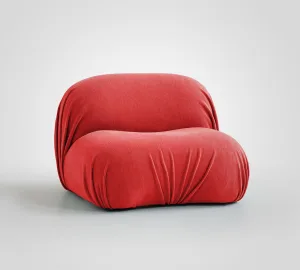Wine is an alcoholic drink made from fermented grapes. People have been making and drinking wine since as early as 6000BC. Archaeologists discovered evidence of Winemaking facilities from this time in the Caucasus, a region comprising Armenia, Georgia, Azerbaijan, and parts of Turkey, Russia, and Iran.
Nowadays, wine enthusiasts are starting their appreciation at a younger age than those over a decade ago, and wine bars are beginning to overtake public bars in the popularity stakes. Wine cellars are becoming a “must have’ feature of high-end properties and enhancing their market value. However, not all wine cellars need to be a huge, expensive affair – they can be as basic or extravagant as you like. If you have a space in your house ripe for converting into a wine cellar, here is a guide on what to consider when building a wine cellar in your home.
Location
Wine is best to be kept in tailor-made cellars to protect it from external factors that may compromise its flavor. Properly stored bottles of wine will maintain their quality and improve in taste and smell the longer the period of time they are stored.
A cellar or wine room should be installed in an area of your home that is cool and dark – preferably free from windows as direct sunlight can react with components of wine known as phenolic compounds and cause the wine to spoil. A cellar underneath the property or an area under a staircase are the most popular locations for housing wine.
Size
How big you make your wine cellar is up to you. It depends on your long-term plan – do you want to build up an extensive collection so you can host wine-tasting parties and immerse yourself in the world of wine collecting, or do you want a more conservative stockpile to enjoy the occasional glass at the weekend? You should also take into consideration costs – the cost of construction and the cost of maintaining the cellar. Plan the size of the cellar on the number of bottles you have and plan to have in the future, the wine bottle dimensions, and how long the bottles will be kept in the cellar. An area of 25 square feet will hold approximately 500 bottles of wine.
Temperature and Humidity
There are two types of wine cellars – Active-cooled wine cellars and passively cooled ones. An actively cooled cellar is one where there is an electronic system installed in the cellar that regulates the temperature and humidity. A passively cooled cellar refers to one which requires no automated intervention as it is built underground and is naturally cool.
Wine should be stored at a temperature of 7-18 degrees Celsius or 45-65 degrees Fahrenheit. Humidity is an another important factor to take into consideration. Ideally, wine should be stored at a humidity range of 50-70%. If the humidity in the cellar is low, the corks in the bottles can dry up quickly and compromise the bottle’s seal. High humidity encourages mold to grow on the labels and the corks.
Vibration
Vibration can affect the nature of wine so ensure that your wine cellar has no fans or cooling systems which vibrate. Vibration has various effects on wine – it disturbs sediment in the bottom of the bottle, resulting in several chemical reactions. Tartaric and succinct acids decrease, leading to a dulling of flavors.
Construction
You can have your wine cellar installed by professionals or build it yourself. A popular option is to hire a company that installs spiral staircase wine cellars, which fit into the floor of your home, has a glass hatch opening flush with your flooring, and gives your home a real talking point.
If you want to construct the cellar yourself, you must first ensure the area you choose is hermetically sealed, cool, water leak-free, and free from sunlight. The floor should be concrete and sealed with a high-quality sealant. Wood and carpet should not be used as they are too porous and susceptible to mold and mildew.
The outside walls of the cellar should have boards of vapor barrier installed behind the insulation, and any cracks in walls should be filled with a foam spray.
The door of the wine cellar needs proper attention as it should have a proper threshold, form a tight seal, and banish any heat from your home entering the cellar. Glass doors should be double glazed with a thickness of at least 2 inches.
If you have an actively-cooled wine cellar, you will need to install a cooling system to regulate the cellar’s temperature in an economical manner.
If you plan on having an extensive collection of expensive wine, you may want to install a lock on the door or a full-on security system.
Racks
Next, you will need some racks on which to store your bottles. The best option is to install floor-to-ceiling racking as it isn’t as expensive as some fancy metal ones, and it looks good. Wine bottles should be stored horizontally to prevent the cork from drying out.
Decor
Now comes the fun part – decorating your wine cellar. Choose a low VOC paint as potent vapors will be difficult to eradicate from a sealed room and may interfere with the bouquet of the wine. The paint should also be moisture resistant. Dark paint colors such as deep reds look great with oak or cedar wine racks. For some added glamour, you could tile the walls, paint a mosaic or hang prints of wine-themed art.
Wine
This is the bit you’ve been waiting for – stocking the wine racks with lovely bottles of plonk. A well-stocked cellar should house wines to suit a variety of occasions. Buy a mixture of white, red, and rose wines for everyday use, some older vintages of Rioja, Barolo, and Bordeaux for parties, and prestige aged wines or champagne for very special occasions. You may want to join wine clubs and societies to get some rewarding advice on wine collecting.





